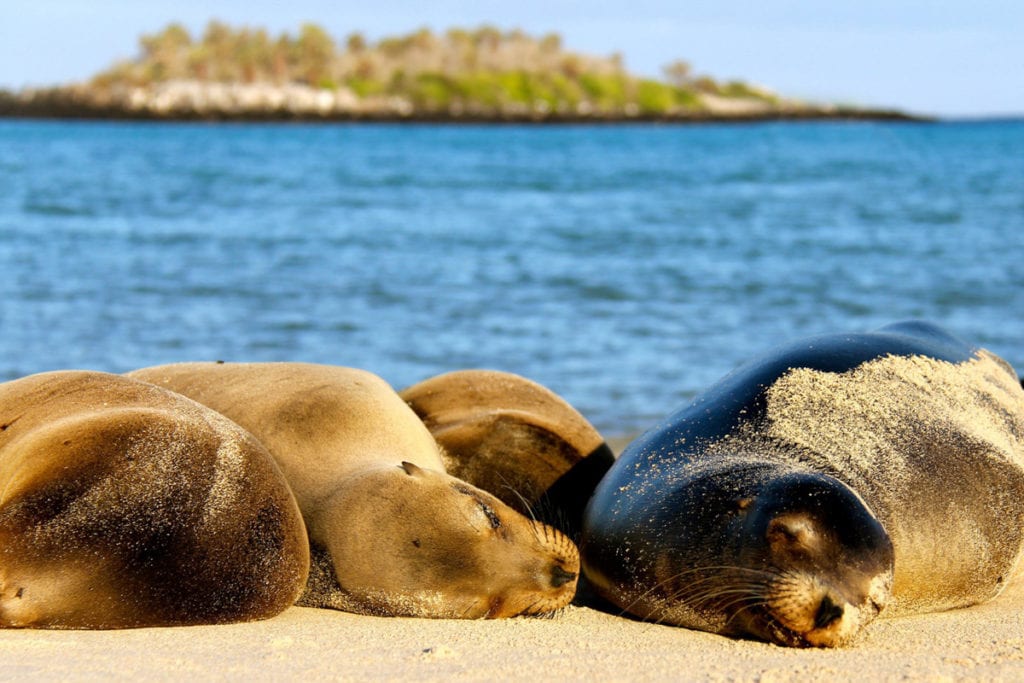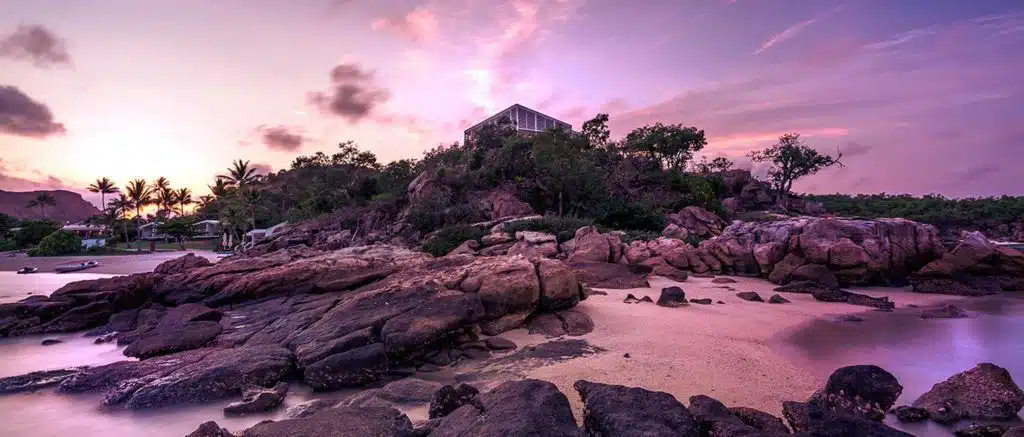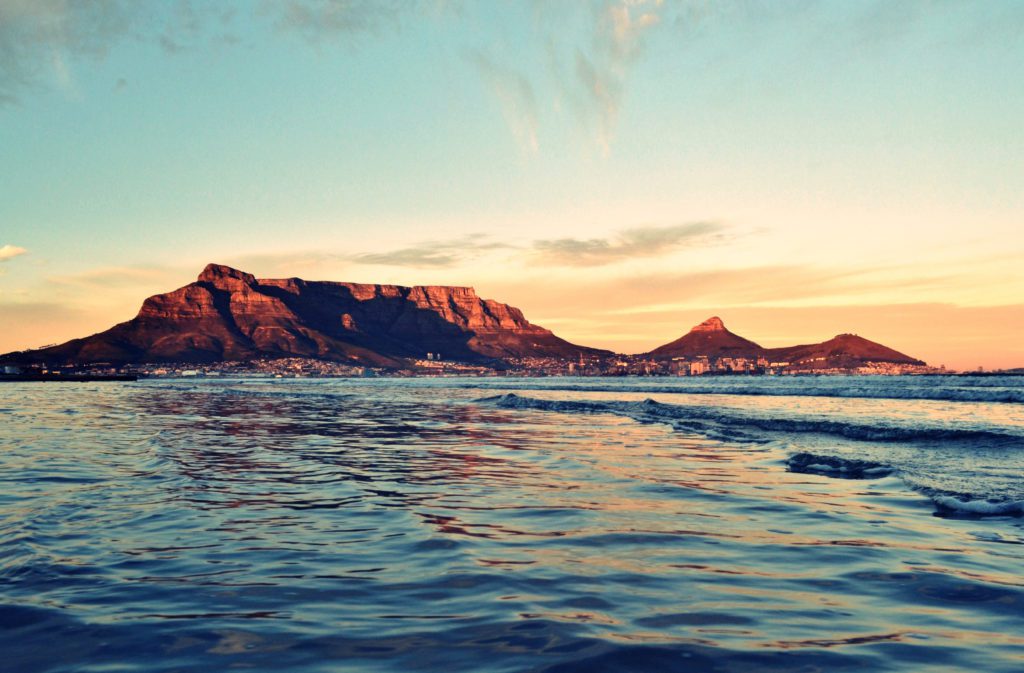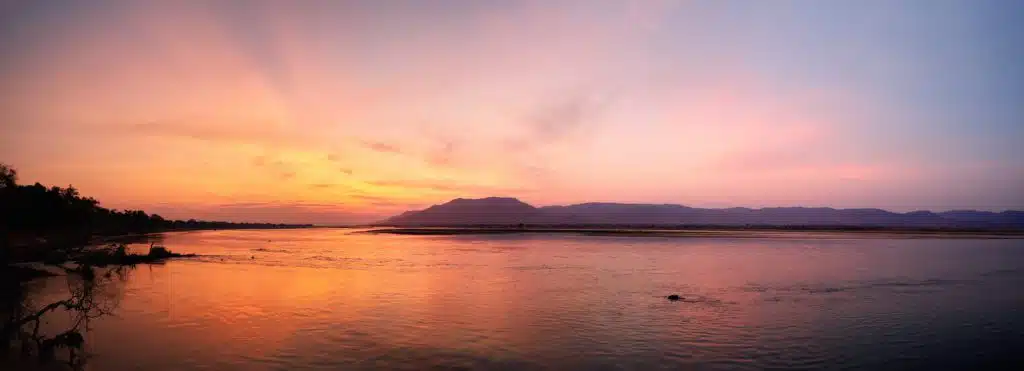WHERE SAFARI MEETS THE SEA
Finding Coastal Safaris
By their very definition, safaris take you on a journey to the interior, far from the shore and into the heart of the wilderness. But it is possible to juxtapose bush and beach on a coastal safari.
Though cheetah, sprinting along white-sand beaches in pursuit of leaping gazelles, or zebra wading from the shore to graze on kelp beds may be unfeasible sights to expect, it is possible to combine wild safari adventures with more sedate coastal surroundings.
Around the world, there are a handful of destinations where the jungle meets the sea, where elephants share horizons with dolphins, and where – if you plan it just right – you can take a game drive on the grasslands and be sipping a beachside coconut come sundown.
Of course, with Rothschild Safaris, anything is possible and one might witness the Great Migration in the morning before boarding a private aircraft to alight in coastal paradise, but select properties offer this experiential fusion in a far more immediate sense.
From the southern cape of Africa to a luxury cruise through the Galápagos, we have selected seven of our favourite venues, providing you with not only impeccable luxury accommodation but also an amalgamation of environments, where wilderness meets waves on a coastal safari.
Lekkerwater Beach Lodge
South Africa’s famed Garden Route is a spectacular coastline drive along rugged shores, the expansive Indian Ocean to the right and rolling fynbos hills and sporadic forests to the left.
In this stunning setting, within the De Hoop Nature Reserve, lies Lekkerwater, an intimate collection of luxury lodges overlooking the ocean but with a superb conservancy beckoning at its back door.
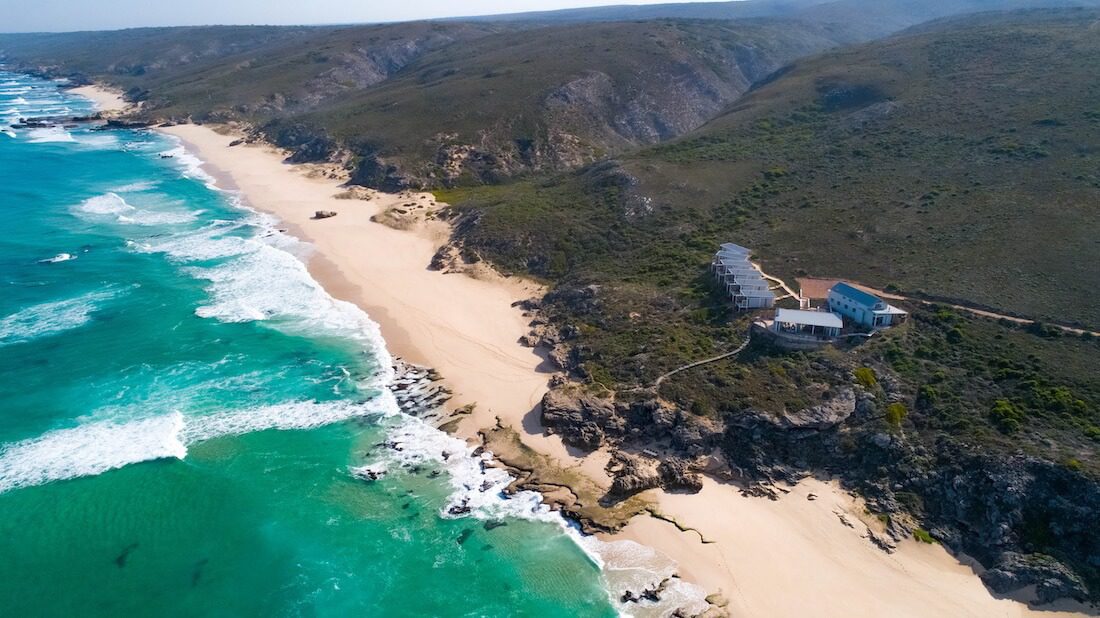
The Garden Route, and De Hoop in particular – sometimes referred to as the jewel of the Southern Cape – are renowned for some of Africa’s finest land-based whale watching, with southern right whales and occasional humpbacks migrating to the warmer northern waters from Antarctica to breed. Dolphins too can be observed in significant number, and the region’s abundant marine life attracts visitors from around the world.
Turning your back to the ocean and venturing inland, De Hoop brings safari to the surf, and though the conservancy isn’t recognised as a home of much of Africa’s big game, you will still find leopard and caracal stalking zebra, gazelle, eland and endangered bontebok.
Birdlife is also abundant, attracted by the sweeping vales of fynbos and the insects that feed upon it. Here, you can wander the shrublands viewing game tracing pathways all the way to the coast, where whales breach and dolphins surf the breaking waves.
Lekkerwater is truly the definitive coastal safari.
The Daintree & Great Barrier Reef, Australia
The Daintree Rainforest and Great Barrier Reef are the only adjoining UNESCO World Heritage sites, providing two vastly different worlds that can be explored almost simultaneously. One can emerge from the jungle on foot and step immediately into the ocean, with both holding equal appeal and vibrancy of life.
The planet’s oldest rainforest, the Daintree homes a host of Australia’s extraordinary creatures, including kangaroos and wallabies, echidna, platypus, fruit bats, crocodiles and the prehistoric cassowary. The towering trees dwarf visitors, clear streams winding between their rotund trunks and a chorus of birdsong reverberates through the foliage. The Daintree is also highly significant to the Kukuk Yalangi people, the traditional custodians of the land who have lived here in harmony with their surroundings for over 50,000 years. Discovering their culture and story is one more charming aspect of a Daintree exploration.

From here, the reef unfolds like a multi-hued canvas of blues and greens. Simply swimming from the beach will allow you to explore a sub-aquatic safari, snorkelling expeditions revealing a gamut of marine life.
Further from shore, life only increases, and shallow reefs are interspersed with deeper waters, attracting a polarity of sealife, from the small, but dazzlingly-beautiful reef fish to larger animals including sharks and manta rays, turtles, dugongs, whales and dolphins.
From rainforest to reef, these two realms contrast in a kaleidoscope of life and colour that one can explore easily within a single day or even less; how and where you spend your time is the hardest decision.
On land, Silky Oaks Lodge and the Daintree Eco Lodge provide tranquil retreats amongst the trees, while offshore, Lizard Island gives you complete luxury with very few other guests. Venturing further into the blue, M.V. Flying Fish offers an exclusive floating home, allowing you to both unwind and relax, and view the changing and diverse coastal regions simultaneously.
M/T Camila, Galápagos
The Galápagos is a coastal safari in reverse, beginning in the ocean, while allowing access to the land.
The archipelago offers some land-based properties, but for luxury, exclusivity and the ultimate Galápagos coastal safari, staying aboard M/T Camila is simply the only choice. These fascinating islands have fascinated explorers, travelers and visitors alike for many decades and, in the sense of exploration and wildlife, they are absolutely where safari meets the sea.
So much so, much of the wildlife most iconic of the destination are amphibious, living both on land and in the water, including penguins, sea iguanas, seals and sea lions and a plethora of sea birds. Cousins cohabit between realms, land iguanas favouring the dry, and giant land tortoises forgoing the aquatic capabilities of their turtle relatives. But even so, life on land and sea is inseparably intertwined.
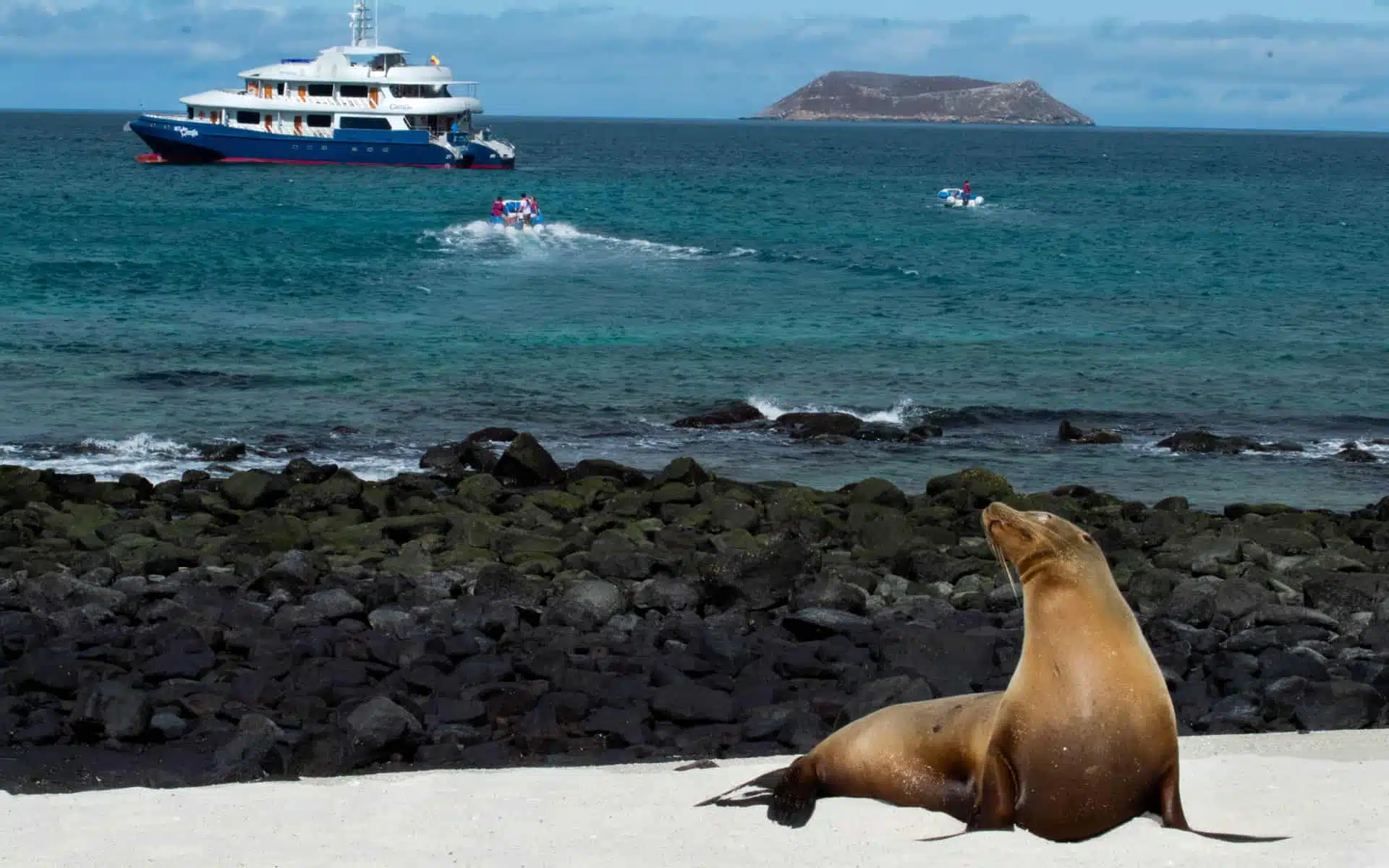
Life aboard is akin to taking your accommodation on a game drive, immersing you in the natural world without relinquishing your luxuries. Private cabins present sea-level views, and on deck you can observe dolphins and several whale species, including on occasion, migratory humpback and blue whales, with orca and the plankton-eating whale shark also residing in Galápagos waters.
There is an unequalled impressiveness to a traditional African safari. The scale of the landscapes, the abundance of wildlife, the very real sense of natural life’s struggles, and the scale of beasts you encounter are all but incomparable, but cast aside the suppositions of a safari and the Galápagos fulfills the criteria of wildlife adventure more than adequately.
Added to this is its sheer uniqueness. Nowhere else in the world can many of these animals be witnessed, certainly not in such number, nor so oblivious to the presence of humans.
It may not have wildebeest and wilderness, but the Galápagos is a remarkable coastal safari.
Greystoke Mahale, Tanzania
By definition, the coast is where land meets sea, but in essence – and with a little grammatical leniency – if there’s enough water and a line of sand, the ‘coast’ can be found far from the ocean.
Tanzania does, in fact, have a coastline, and the island of Zanzibar is renowned as a tropical African retreat, but the safari element is distinctly lacking.
Conversely, Lake Tanganyika may not have coral reefs saline waters or an endlessly expansive horizon, but it does offer some incredible coastal safaris, and one very special experience in particular.
At 12,700 square miles (32,900 km2) and reaching almost 5,000 feet (1,500m) in depth, Tanganyika is about as close as a lake can come to a sea, even if not in proximity. Its crystal-clear waters are wonderful for sailing upon in a traditional dhow or cooling off with a refreshing swim. Sunset over the lake is breathtaking, the golden rays of last light illuminating the tranquil surface.
In this idyllic setting lies Greystoke Mahale, where Robinson Crusoe and Tarzan could equally bond over a coconut or two. Part island cabin, part safari camp, Greystoke Mahale lies on a wide stretch of sand opening out across the lake. Yet despite this impeccable location, the lake is secondary to the camp’s attractions.
Mahale Mountain National Park is home to some of Africa’s most accessible chimpanzee colonies, and it is for this that many people visit Greystoke and its inland-coastal location.
Trekking through the mountainous jungles, you can witness the chimps at play and rest, some of our closest living relatives giving us an acute insight into our beginnings. Returning to camp, red-tail monkeys spring through the palm fronds and hippo are beckoned by curiosity from the lake floor.
Ocean or not, Tanganyika provides that atmosphere of relaxation and escape that can almost only be found in the presence of lapping waves and soft sand. Waking up on the lake, trekking with chimps by day and sundowners on the shore – this is the perfect combination of land-borne nature and coastal requiescence.
Makokola Retreat, Malawi
Unlike Tanzania, Malawi is completely landlocked, but similarly, it also has significant lakeside coastline. The inverse reflection of Tanganyika, Lake Malawi, or Nyasa as it is locally known, is the star attraction, its pristine waters enjoyed by swimmers, divers, and watersports enthusiasts.
Makokola Retreat is more akin to Bali or Maldives than the heart of Africa, and thatched villas, alfresco restaurants and extensive beach frontage transport you from grasslands to tropical islands.
Kayaking, fishing, sailing, waterskiing and even island hopping can be enjoyed on Lake Nyasa, with Makokola providing luxurious accommodations from which to venture.
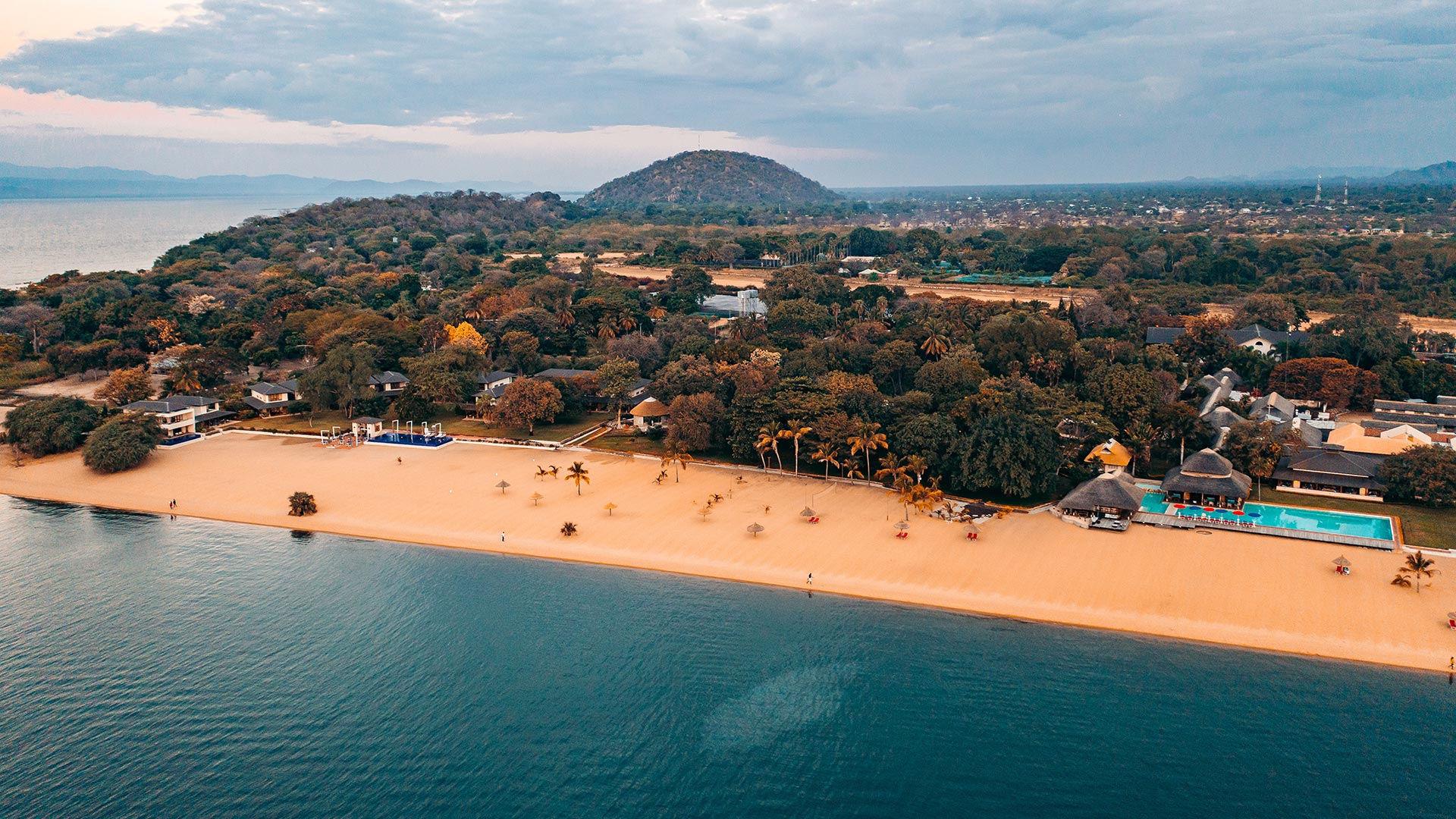
One and a half hours from Makokola’s doorstep, Liwonde National Park gives you a safari in the truest sense, with game drives allowing you to observe elephant, hippo, black rhino, numerous antelope species and even lion and cheetah.
Liwonde isn’t the most renowned of Africa’s national parks, nor is it the best, but it offers more than enough flavour of safari to be an excellent choice to combine with your lakeside vacation.
If you are searching for the best of both worlds on your coastal safari, finding warm waters, soft sands and safari in the same place, Lake Nyasa and Makokola are the closest you will find to the perfect combination.
Within a larger itinerary, it is highly possible to have both; five on the plains of the Maasai Mara followed by a long weekend in tropical luxury on Mozambique’s Pemba Island is more than accomplishable, but in both examples, the one is distinctly without the other – safari, or coast, but not both at the same time.
There are compromises to be made in any adventure. While a location may excel in its own right, it will lack where others may outshine.
The beauty of these destinations is not in the superiority of their experiences but in the diversity to be found. There is no end to the horizons that endless travel can unveil, but for the variety provided by a coastal safari, reinterpreting the notion of both will give you an unforgettable, wonderfully assorted experience.

